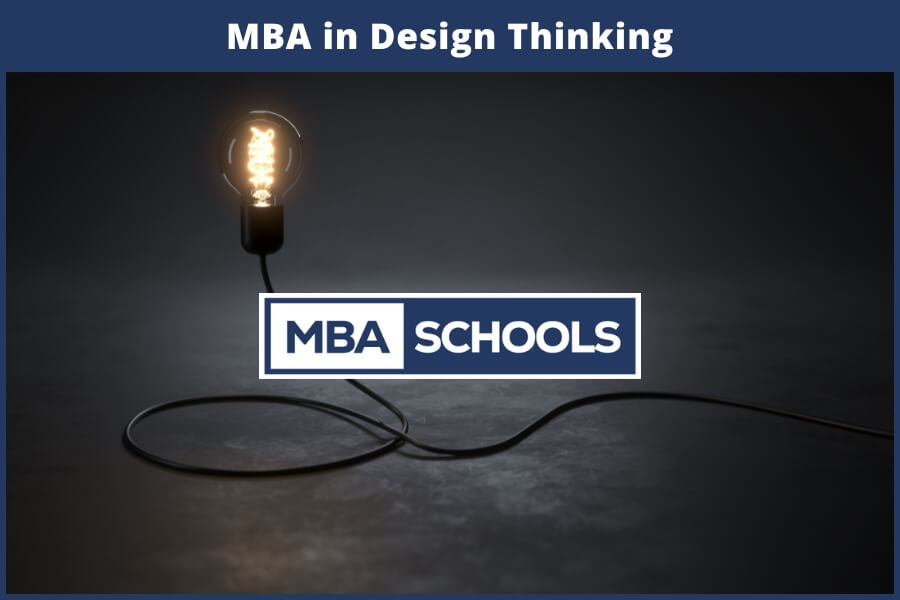MBA in Design Thinking
An MBA in Design Thinking is tailored for professionals looking to integrate creativity, problem-solving, and user-centered strategies into business innovation. This specialization focuses on human-centered design, iterative problem-solving, creative leadership, and product innovation, equipping graduates with the expertise to manage design-driven business models, customer experience strategies, and disruptive innovation initiatives.
According to McKinsey & Company, companies prioritizing design thinking outperform their competitors by 32% in revenue growth and 56% in total shareholder return (McKinsey). Additionally, the U.S. Bureau of Labor Statistics (BLS) reports that product and UX design-focused roles have a median salary of $120,000, with design leadership roles earning significantly more (BLS).
An MBA in Design Thinking specialization is ideal for professionals seeking to drive innovation through user-centric design, optimize customer experiences, and lead creative problem-solving initiatives.
Learn more about MBA degrees.

Table of Contents
What is an Online MBA in Design Thinking?
An Online MBA in Design Thinking provides a flexible pathway for professionals looking to develop expertise in creative problem-solving, strategic innovation, and user experience design while continuing their careers. These programs focus on empathic research, rapid prototyping, and iterative development, helping students prepare for leadership roles in customer experience design, corporate strategy, and product innovation.
Students gain expertise in collaborative design methodologies, business model innovation, and service design, ensuring they are equipped to solve complex business challenges and create customer-centric solutions. Many online programs include real-world design case studies, business innovation labs, and product development simulations, providing an immersive learning experience.
What Are the Admissions Requirements for an MBA in Design Thinking?
Admissions requirements for an MBA in Design Thinking vary by program, but typically include:
- Bachelor’s Degree – From an accredited institution, such as a Bachelor of Business Administration or a bachelor’s in design, technology, or a related field.
- Work Experience – 2-5 years of professional experience in business strategy, design management, or product development is preferred.
- GMAT/GRE Scores – Some programs require standardized test scores, while others offer waivers.
- Personal Statement – Discussing career goals and why the applicant is pursuing an MBA in Design Thinking.
- Letters of Recommendation – Typically from employers, industry leaders, or academic mentors.
- Resume – Highlighting experience in UX design, customer experience strategy, or business innovation.
Is an MBA in Design Thinking the Right Specialization for You?
An MBA in Design Thinking specialization is best suited for professionals who are creative, strategic problem-solvers, and customer-focused leaders. If you are interested in human-centered business solutions, innovation strategy, and product development, this specialization will provide the necessary skills for career advancement.
Unlike other MBA specializations, such as Innovation Management or Marketing Strategy, an MBA in Design Thinking focuses on customer empathy, iterative problem-solving, and design-driven business transformation. If you want to lead creative business strategies, optimize customer experiences, or drive design innovation in corporate settings, this program may best fit you.
MBA in Design Thinking Curriculum: What Classes Will I Take?
Most MBA in Design Thinking programs take 1-2 years to complete, depending on whether students enroll full-time, part-time, or in an accelerated format.
Core Courses in an MBA in Design Thinking
The curriculum for a Design Thinking MBA specialization blends business leadership with design strategy expertise through courses such as:
- Human-Centered Design & Innovation Strategy
- Design Thinking for Business Leaders
- Rapid Prototyping & Agile Product Development
- Service Design & Customer Experience Optimization
- Behavioral Science & Consumer Insights
- Creativity and Business Model Innovation
- Strategic Problem-Solving with Design Thinking
- Leadership in Design-Driven Organizations
Many programs also incorporate design sprints and business innovation projects, including real-world case studies in customer engagement, iterative problem-solving, and business model prototyping. Some students complete internships with design consultancies, innovation labs, or product development firms to gain hands-on experience before graduation.
What Career Options Do I Have with an MBA in Design Thinking?
A Design Thinking MBA specialization prepares graduates for leadership roles in customer experience design, business innovation, and strategic consulting. Common job titles include:
- Chief Design Officer (CDO) – Leads corporate design strategy and customer experience initiatives.
- User Experience (UX) Director – Oversees digital product design and human-centered business solutions.
- Innovation Consultant – Advises companies on design-driven strategy and customer engagement.
- Product Design & Development Manager – Leads product ideation, testing, and market launch strategies.
- Corporate Strategy & Transformation Leader – Manages large-scale business model innovation.
Salary Expectations
Salaries for MBA in Design Thinking graduates vary based on industry, experience, and expertise. According to BLS and McKinsey, design professionals with an MBA typically earn:
- Chief Design Officer (CDO) – $140,000 – $300,000
- User Experience (UX) Director – $120,000 – $220,000
- Innovation Consultant – $110,000 – $200,000
- Product Design & Development Manager – $115,000 – $210,000
- Corporate Strategy & Transformation Leader – $130,000 – $250,000
Take the Next Step Toward a Leadership Role in Design Thinking
An MBA in Design Thinking provides the expertise to develop user-centered solutions, drive creative business strategies, and lead design-driven innovation. Whether you want to optimize customer experiences, implement business model transformation, or build design-led corporate strategy, this degree will give you the knowledge, skills, and network to achieve your career goals.
Explore top-ranked MBA in Design Thinking programs today and start advancing your career.
Sources
- McKinsey & Company. (2023). The Business Value of Design: How Companies Outperform with Design Thinking. Retrieved from https://www.mckinsey.com/
- U.S. Bureau of Labor Statistics. (2023). Occupational Outlook Handbook: UX & Product Design Careers. Retrieved from https://www.bls.gov/